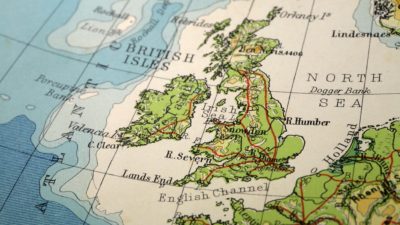It is with 2015’s lacklustre returns in mind that I provide an overview of today’s financial results, before outlining why I would still prefer to avoid or walk away from National Grid (LSE: NG) shares.
Earnings & divestment
The headline in today’s results was without doubt the proposed sale of a majority stake in the group’s gas distribution network.
Already the media is abuzz with reports of how the sale could fetch anything up to £11 billion, and how almost all of this would be returned to shareholders through special distributions.
Should you invest £1,000 in IAG right now?
When investing expert Mark Rogers has a stock tip, it can pay to listen. After all, the flagship Motley Fool Share Advisor newsletter he has run for nearly a decade has provided thousands of paying members with top stock recommendations from the UK and US markets. And right now, Mark thinks there are 6 standout stocks that investors should consider buying. Want to see if IAG made the list?
Now this could be a good thing for investors, given that the group’s already generous annual dividend amounts to less than £2 billion, and it may actually happen. However, so far, the market seems un-enthused, with the shares up a meagre 2% by lunch time.
The group also reported what it described as a 22% increase in first-half EPS, with much of this growth being predominantly the result of ‘other activities’, which is the term used to describe income from its inter-connectors business and from property activities.
Operating profits from UK gas transmission also increased, along with those from regulated activities in the US.
Balance sheet & valuation
From a balance sheet perspective, the cold hard truth surrounding National Grid is that it remains hideously overleveraged and that this issue of stretched finances is only likely to continue as a theme in future years.
First and foremost, rising interest rates will mean higher finance costs for the group, which may in turn prove to be a headwind to revenue and earnings growth that is already going to struggle to remain above the low single digits over the medium to longer term.
Secondly, management have already told us that they intend to borrow an additional £2-3 billion every year for “the next few years” in order to finance investment, which amounts to a 10% per annum increase in long term liabilities.
This wouldn’t be a problem if it weren’t for the fact that NG’s gearing is already at 66%, while the value of its debt sits at twice that of shareholders equity, leaving debt/equity at 1.93x.
The group currently trades on a forward multiple of just over 15x the consensus estimate for EPS in 2015, which implies a 15% discount to the sector average, but is in line with the average for the sector if water utilities are excluded.
Where this multiple places on the value spectrum will depend entirely upon the individual’s assessment of whether multiples averaging 15x -17x the consensus can ever be justified in an overleveraged, low-growth sector.
The verdict
It is disconcerting to note that management intend to dispose of assets worth up to £11 billion and yet they still intend to borrow an additional £2-3 billion each year, which implies a 10% per annum increase in long-term liabilities for the foreseeable future.
This feeds into to my own long held view that, eventually, something will have to give at National Grid.
Only now it transpires that, with gains from asset disposals likely to be returned to shareholders, it will probably be the regular dividend that gives out over the medium term at NG.
My guess is that management will not return “substantially all” of the proceeds from any sale as promised this morning.
I believe that, before the finish line, sense will probably overcome them and they will elect to do a bit of everything instead — which would include special dividends, paying down debt and setting aside provisions for future regular dividends.
Either way, I suspect that the eventual outcome of this situation will probably lead to disappointment for at least some investors.
If it were me, I wouldn’t hang around to find out how this story ends as the shares appear to have peaked a long time ago, and if today’s news (earnings growth + dividend & disposals) is not enough to change this, then it is difficult to imagine what would be.







